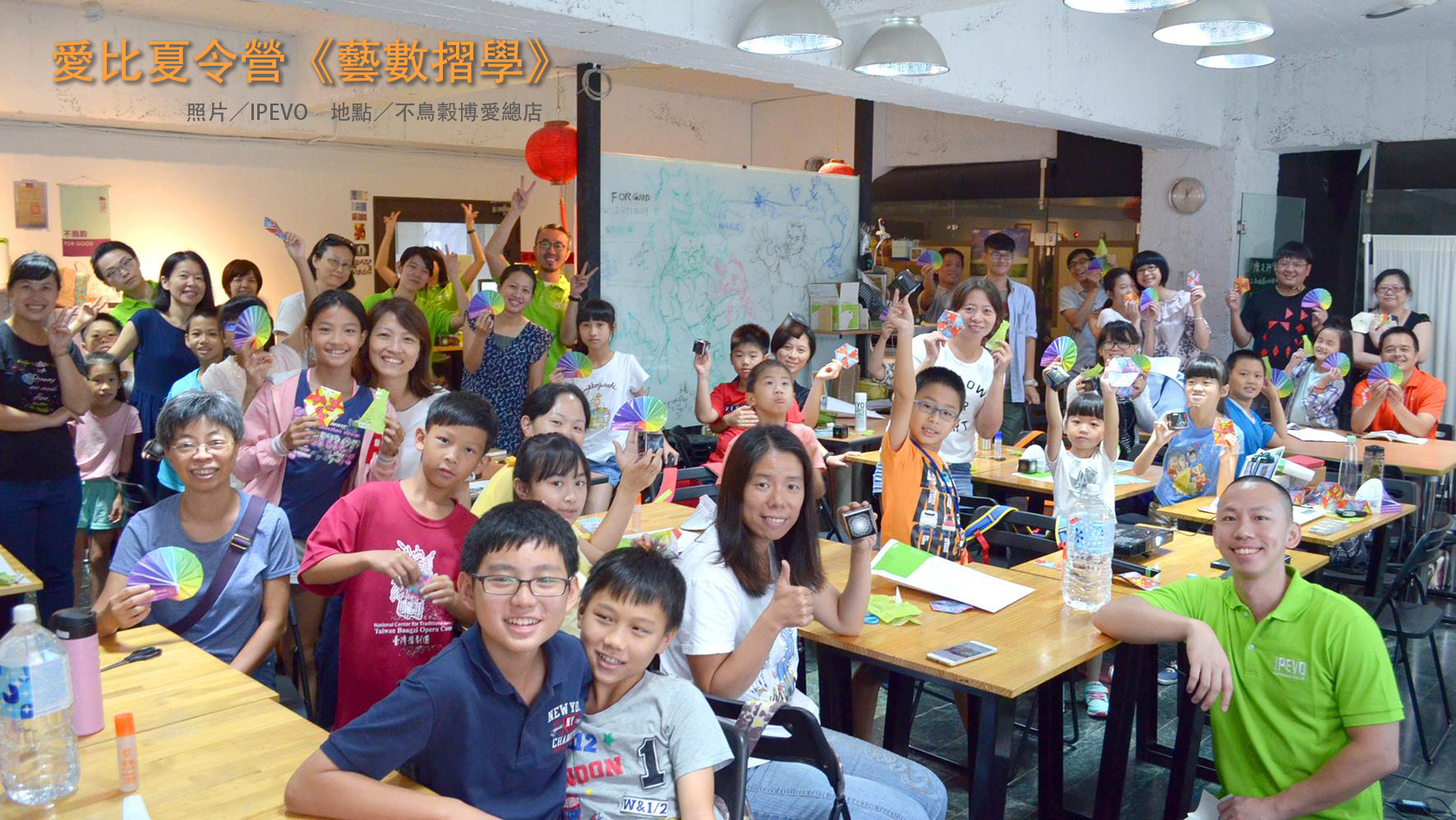
2018年7月25日在不鳥穀博愛總店,暑期首度一場有關小朋友的夏令營活動《 藝數摺學 》開跑囉~
這個由IPEVO愛比科技公司與林口國中李政憲老師所合作的「藝數摺學」,這個主題看來就跟數學有關,但卻不是一般老式的教學,而是結合了老師所設計的紙張,跟他所授課方法的教導所設計的一套教學方法,令人耳目一新。當時小編也有在場體驗喔。
李老師把數學結合了藝術,真的是讓理論方面的數學多加了一些豐富有趣的色彩,這真的是一個很值得讓小朋友體驗培養學習的一個活動。

▲ 愛比夏令營《 藝數摺學 》, 不鳥穀博愛總店 。
又加上小朋友可由大人家長陪同,也培養孩子跟家長的互動,小朋友跟家長認真投入的樣子,小編看了揪甘心。
那為何愛IPEVO比科技怎們跟李老師的摺紙藝數有關呢?這就由鳥小編來爲大家介紹~
當時老師在教學摺紙時,因為要一個步驟一個步驟仔細讓大家、都看的清楚、看的仔細,可能以往的教學老師可能要大家集合來台前看老師示範、又或者是老師要手舉高、又或者老師要走到每個同學旁邊一一走動示範,但現在時代不一樣了,除了教學多樣化之外,也是科技時代,如同有句話說『科技始終來自於人性』,所以採用新的科技產品:實物投影機。
這次的摺紙借助IPEVO愛比科技所提供的「實物射影機」,而實物射影機簡單的來說他能將拍攝到的實體物投射在布幕、電視等等的一台科技產品。
ISTE2018 驚豔芝加哥的迷你世足──IPEVO VZ-R攝影機怎麼可以如此清晰
▲如上圖,圖片轉載至IPEVO愛比科技公司。

▲愛比夏令營《藝數摺學》 不鳥穀博愛總店
那當時李老師的教學就是投射在布幕上,拍射效果真的是很清,老師的摺紙步驟一舉一動都拍的很清楚仔細,真的是科技始終來至於人性。
整場活動真的很有趣好玩,這就是小朋友夏令營很歡樂的活動優勢。後來小編也才知道這是愛比公司第一次辦的夏令營活動,真的辦的很成功。如果不說小編還不知道這是愛比初體驗的活動,還真的是看不出來。
3個小時多從開使到結束,感覺大家都很歡樂,還有家長小孩拍照留念,小編看了都融化了呢。
希望能在不鳥穀多多看到這麼既歡樂又溫馨的夏令營活動😆
愛比夏令營《 藝數摺學 》 美美的成品

▲愛比夏令營《藝數摺學》在不鳥穀博愛總店舉辦成功(圖取自愛比科技)。
若想知道老師之後有趣的活動,可以加入老師的社團哦~
藝數摺學社團連結:
https://www.facebook.com/groups/108923286120994/
The opaque projector, epidioscope, epidiascope or episcope is a device which displays opaque materials by shining a bright lamp onto the object from above. A system of mirrors, prisms and/or imaging lenses is used to focus an image of the material onto a viewing screen. Because they must project the reflected light, opaque projectors require brighter bulbs and larger lenses than overhead projectors. Care must be taken that the materials are not damaged by the heat generated by the light source. Opaque projectors are not as common as the overhead projector.
Opaque projectors are typically used to project images of book pages, drawings, mineral specimens, leaves, etc. They have been produced and marketed as artists’ enlargement tools to allow images to be transferred to surfaces such as prepared canvas, or for lectures and discourses.
History
Swiss mathematician, physicist, astronomer, logician and engineer Leonhard Euler demonstrated an opaque projector around 1756. It could project a clear image of opaque images and (small) objects.[1] French scientist Jacques Charles is thought to have invented the similar “megascope” in 1780. He used it for his lectures.[2] Around 1872 Henry Morton used an opaque projector in demonstrations for huge audiences, for example in the Philadelphia Opera House which could seat 3500 people. His machine did not use a condenser or reflector, but used a oxyhydrogen lamp close to the object in order to project huge clear images.[3]
The light source in early opaque projectors was often limelight. Incandescent light bulbs and halogen lamps are most commonly used today.
In the early and middle parts of the 20th century, low-cost opaque projectors were produced and marketed as toys for children.
In educational settings, the specific role of the opaque projector has been superseded first by the overhead projector and later the document camera, a lighted table with a fixed video camera above it. The image from the camera is displayed using a separate projector. The document camera is also called a desktop presenter unit or opaque projector.


















.jpg?fit=100%2C100)



